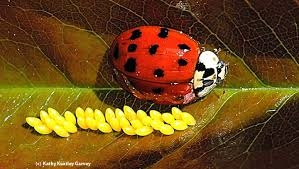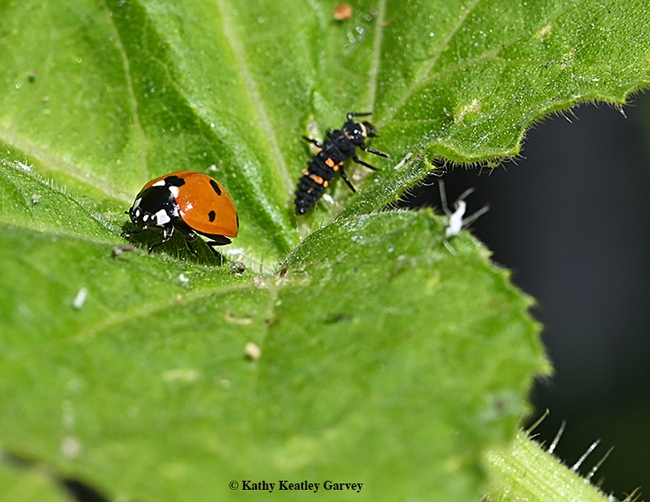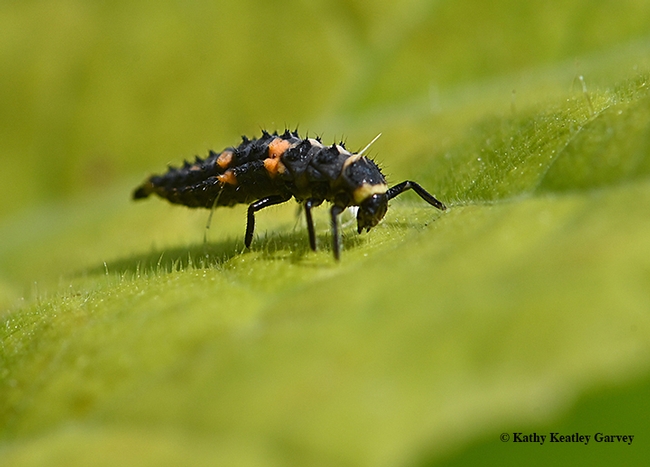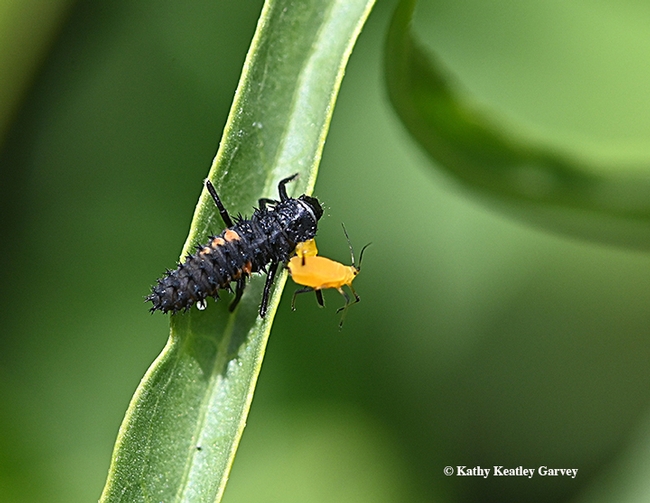
Have you ever heard anyone say that when they see the larva of a lady beetle (aka ladybug, family Coccinellidae)?
Unfortunately, it's quite common among non-gardeners and non-insect enthusiasts.
The larvae of lady beetle are mostly black and look like tiny, spiny alligators, but they're beneficial insects just like the adult lady beetles. In the adult and larval stage, they're both predators that prey mainly on aphids, but they'll also eat thrips, spider mites, scale insects, and other soft-bodied insects.
An adult lady beetle can eat as many as 5000 aphids in its lifetime, scientists say. Who knows how many a larva can eat! Who's counting?
"Young lady beetle larvae usually pierce and suck the contents from their prey," according to the UC Statewide Integrated Pest Management Program's website. "Older larvae and adults chew and consume their entire prey. Larvae are active, elongate, have long legs, and resemble tiny alligators."
You've seen lady beetle jewelry and t-shirts and the like (check out the gift shop at the Bohart Museum of Entomology at UC Davis, located in Room 1124 of the Academic Surge Building on Crocker Lane), but the larvae? They aren't represented.
They're well represented in many gardens, however. In our garden, the adults and larvae are polishing off the oleander aphids on our milkweed plants.
Attached Images:


